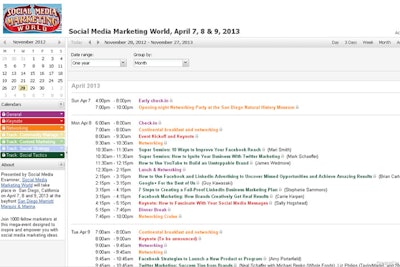
Teamup Calendar is a new, free cloud-based calendar system that has multiple functions for planners and events. The product launched in October and is intended to facilitate creating, maintaining, and sharing group calendars, which the creators say differentiates it from Google Calendar.
“Google is mainly a personal calendar. Our intention is really for a group to maintain content and be able to coordinate who does which task and which calendars you want to share publicly. Google is not designed for that purpose, and we are not designed to be a personal calendar,” said Teamup Calendar co-founder Jenny Zhan.
Teamup Calendar does not require user accounts. Instead the person who creates the calendar becomes the administrator and can share it with others by sending unique Web links. Each link can accommodate different levels of access. For example, it can be shared publicly with read-only rights and then made available to an internal group with editing capability. The system can also accommodate up to 10 color-coded sub-calendars based on specific tasks, such as one for people working on the event’s catering plans and another for those working on entertainment. Within the calendars, participants can add notes, links, and other information related to the event.
The system can also be used to create, manage, and share the agenda for an event. The calendar can be embedded on an event’s Web site or Facebook page and can include the event’s logo and “about” information. Using the color-coding options, planners can identify program tracks: for example one color for networking events and another for education sessions. Users can then select the tracks that interest them so the calendar only displays those sessions. Clicking on an entry in the event agenda can provide attendees additional information, such as a speaker bio or presentation notes.
Zhan said the company is gathering feedback from users and will use that to develop additional features, some that may be part of a fee-based version.



















